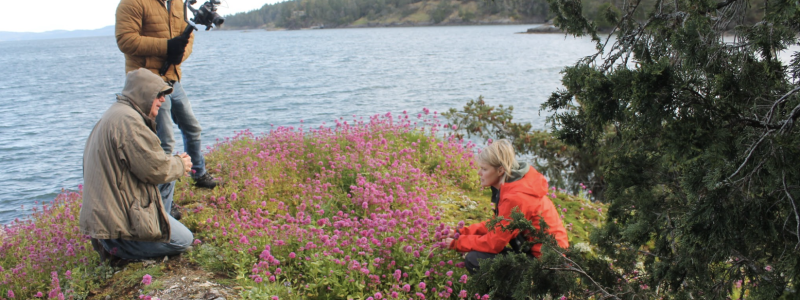Centered on the Garry oak ecosystems on Vancouver Island, B.C., a new documentary shows how Indigenous wisdom and contemporary science can work together to understand and preserve this invaluable ecocultural landscape.
TWU is hosting the premiere of the documentary Blessed is the Spot: The Wounding and Healing of the Garry Oak Ecocultural Landscape, a film directed by several TWU faculty. The showing is on March 18, 6:30 p.m. at DeVries Centre Auditorium on the Langley campus (22500 University Drive).
Celebrating Sustainability Week 2024
The film showing is part of Sustainability Week at TWU, an annual event that highlights environmental responsibility and creation care. See TWU's Sustainability Week for a full listing of events March 18–22, 2024.
“Especially in these troubled times, our need to revise our relationships with creation and with each other is an urgent ethical imperative. …We focus our research efforts on healing our relationship with the environment…”
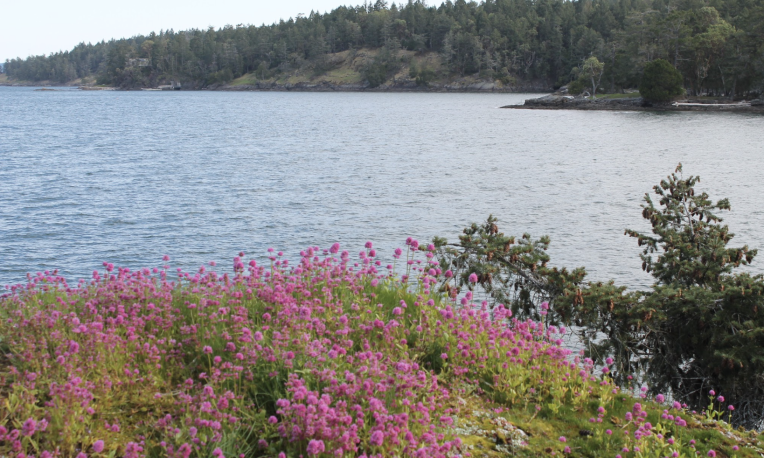
Canada's endangered ecosystem
Garry oak ecosystems are unique to coastal British Columbia.
“It is one of the largest bastions of biodiversity in Canada,” said Dr. David Clements, a TWU biology professor and one of the film’s creators. “Yet only a small percentage of the Garry oak habitat is left, and most of it is degraded by invasive species, overabundance of deer, and other issues.”
The film was a collaborative project in which researchers and filmmakers consulted with local Indigenous elders.
“Working closely with the Cowichan elders and researchers to produce this documentary reinforced and augmented my own appreciation and knowledge of these incredibly unique ecosystems,” Clements continues. “Even after researching Garry oak ecosystems for more than 20 years, there is always more to uncover.”
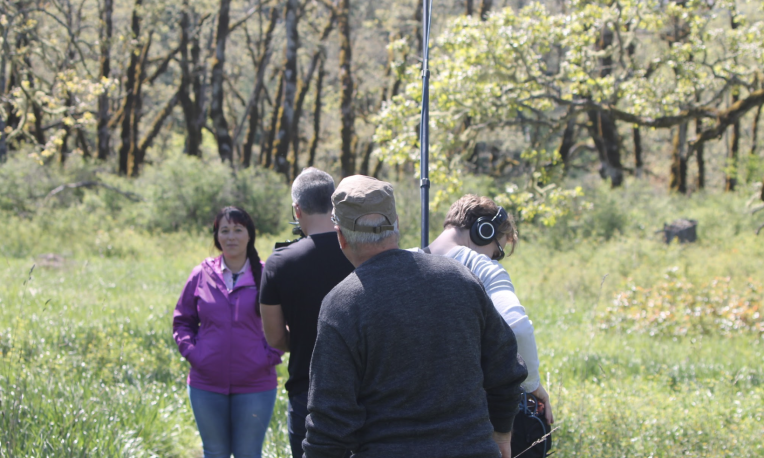
"Healing must also take place in community; broken societies cannot be effective caretakers of creation. Part of our brokenness is a failure to fully realize the nature of science at its best, as a faithful means of both exploring God’s creation and moving into harmony with it."
Nature living with humanity
Clements underscores the integration between scientific and Indigenous knowledge, a combination he summarizes as “ecocultural landscape.”
“Western science often mistakenly divorces nature from humanity,” says Clements, “but in the case of Garry oak ecosystems, it is abundantly clear that these landscapes were produced by a highly sophisticated agricultural system that produced important foods and medicines for the Indigenous peoples while at the same time multiplying pretty flowers.”
The team filmed several scenes at the TWU Salt Spring Island ecological preserve, also known as the Crow’s Nest Ecological Research Area.

Garry oaks vital to Salish peoples
Filmmaker and professor Dr. Ned Vankevich points out how their film is unique in that it uses both a Western science and traditional Indigenous knowledge approach to understanding the Garry oaks and “the multiple roles they have played in the Salish Sea communities over the last several hundred years.”
Vankevich adds, “Many of the specialists and researchers studying it are local to the Vancouver area and Vancouver Island. These ecocultural systems have played a vital role in the Cowichan culture and of other Salish peoples.”
"Yet even now there is a chance for healing these relationships."

'Healing wounds'
The message of the film is one of "healing the wounds caused by the widespread colonial impacts on Garry oak ecosystems," Clements explains, "not just through direct impact but through failing to recognize the ecocultural heritage of these areas that were cared for by Indigenous peoples for millennia."
“Yet even now there is a chance for healing these relationships."
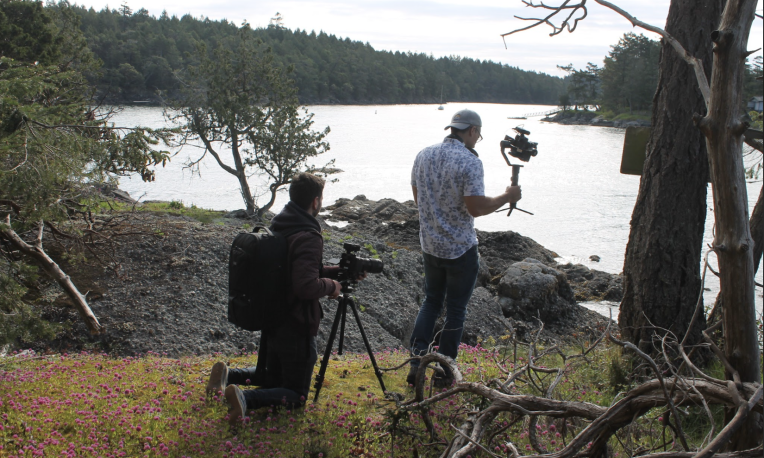
About the film
The documentary Blessed is the Spot: The Wounding and Healing of the Garry Oak Ecocultural Landscape was created by several TWU faculty members in partnership with B.C. researchers and Cowichan elders. A launch event and film showing will be hosted on March 18, 6:30 p.m. at TWU’s Langley campus.
Presented by Trinity Western's School of the Arts, Media + Culture together with the Faculty of Natural and Applied Sciences, the launch event will feature a panel discussion with a Vancouver Island Cowichan Elder, an Indigenous scholar, scientists engaged in studying and protecting the unique Garry oak ecosystems, and filmmakers Ned Vankevich and Jef Gibbons.
Panelists include: Robert George (Cowichan First Nation Elder), Dr. Jennifer Grenz (Indigenous Ecology Lab, UBC Faculty of Forestry), Dr. Tara Martin (UBC Faculty of Forestry), Genevieve Singleton (Nature Interpreter, Duncan, BC), Dr. David Clements (Department of Biology, Trinity Western University), Jef Gibbons (School of the Arts, Media + Culture, Trinity Western University), and Dr. Ned Vankevich (School of the Arts, Media + Culture, Trinity Western University).
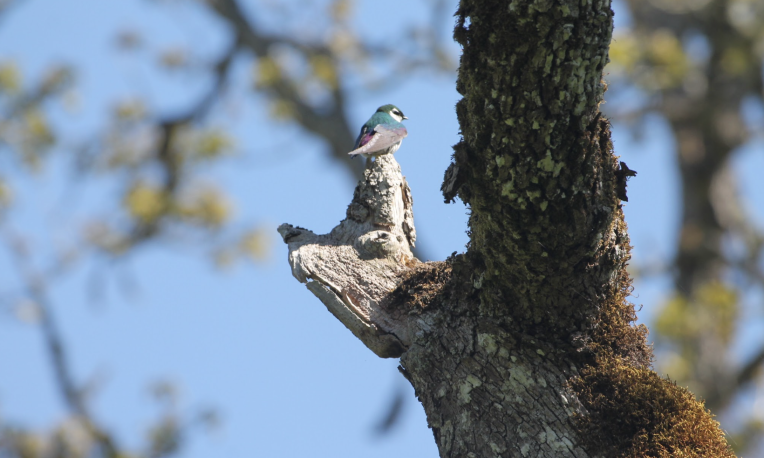
Gratitude for sponsors
Support for the project came largely through donors who support the Trinity Western University ecological preserve on Salt Spring Island. Every year Trinity Western students get to experience the magic of Garry oak meadows at the site called the Crow’s Nest Ecological Research Area. The film profiles the site, as well as several other amazing Garry oak ecosystems in the area.
Funding for staging the film’s premiere is from a grant awarded to the TWU Faculty of Natural and Applied Sciences from Scholarship & Christianity in Oxford on the theme of sustainability. The grant proposal, written by Dr. Clements and other TWU faculty members, highlights the project’s purposes:
“Especially in these troubled times, our need to revise our relationships with creation and with each other is an urgent ethical imperative. …We focus our research efforts on healing our relationship with the environment…”
“However, research alone is not enough. Healing must also take place in community; broken societies cannot be effective caretakers of creation. Part of our brokenness is a failure to fully realize the nature of science at its best, as a faithful means of both exploring God’s creation and moving into harmony with it.”
About TWU's Ecosystem Study Area and Field Study Sites
Donated in 2000, the Crow’s Nest Ecological Research Area is comprised of 72.7 acres within minutes of Fulford Harbour on Salt Spring Island. The Crow's Nest Ecological Research Area is one of several field study sites together with Trinity Western University's Ecosystem Study Area (ESA) on the Langley campus, an area dedicated to the study, preservation, and proper management of the environment. It is a valuable area of diverse and sensitive habitat, containing part of the Salmon River and some tributaries. Learn more at Trinity Western's Ecosystem Study Area and Field Study Sites.
About Trinity Western University
Founded in 1962, Trinity Western University is a global Christian liberal arts university. We are dedicated to equipping students to discover meaningful connections between career, life, and the needs of the world. Drawing upon the riches of the Christian tradition, seeking to unite faith and reason through teaching and scholarship, Trinity Western University is a degree-granting research institution offering liberal arts and sciences as well as professional schools in business, nursing, education, human kinetics, graduate studies, and arts, media, and culture. It has campuses in Canada in Langley, Richmond, and Ottawa. Learn more at www.twu.ca or follow us on Instagram @trinitywestern, Twitter @TrinityWestern, on Facebook and LinkedIn.
For media inquiries, please contact: media@twu.ca.

